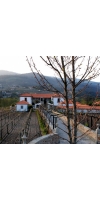Wine from Reguengo de Melgaco

Reguengo de Melgaço means land of the royalty. The name comes from the fact that the estate belonged to the Portuguese royal family on the XVI century from where it got its name.
Date Founded: 1998
Reguengo de Melgaço means land of the royalty. The name comes from the fact that the estate belonged to the Portuguese royal family on the XVI century.
As the property once belonged to aristocratic feudal families, the Melgaço population used to pay the tithe based on its production. This is the reason why you can find some very large “lagares” and “canastros” existing in the Quinta.
No products found
- back
Selected Options
Wineries
Categories
Pricing
Countries
Regions
Grape Types
Wineries
Organic/Free Shipping
Taylor Fladgate Vintage Port.
On the palate, the wine has beautifully ripe tannins, which integrate perfectly into the mid-palate, providing both structure and volume, and then break out on the finish with a firm wiry, grip. The palate closes with a powerful tide of fresh, complex fruit flowing endlessly through the finish. In the 2018, the Taylor traits of fine fruit and inner power combine seamlessly with the ripeness and depth typical of the vintage.
Long Shadows Poets Leap Riesling is made from 100 percent Riesling.
Tasting Notes: The Poet's Leap Riesling offers aromas of white peach, jasmine, Thai basil and nutmeg. Flavors of ripe melon, apricot and an appealing minerality continue across the palate. An underlying hint of honey sweetness is balanced by a streak of bright acidity that provides a long, clean finish.




